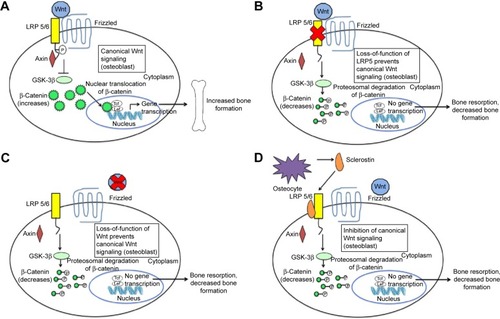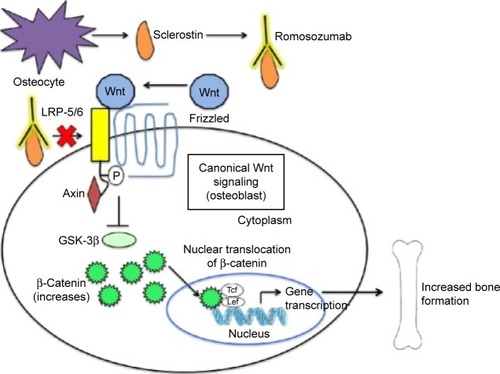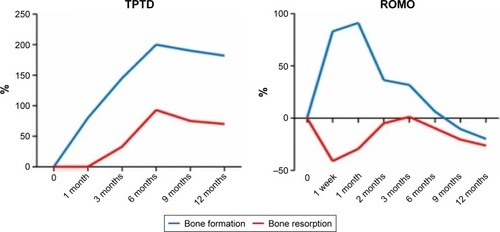Figures & data
Figure 1 The canonical Wnt-β-catenin signaling pathway and the effects of inhibition through loss of function mutations and sclerostin inhibition.
Abbreviation: LRP, LDL-receptor-related protein.

Figure 2 Mechanism of action of romosozumab.
Abbreviation: LRP, LDL-receptor-related protein.

Table 1 Important Phase I, Phase II, and Phase III studies of romosozumab
Figure 3 Changes in the levels of bone formation markers and bone resorption markers with subcutaneous injections of TPTD (20 μg daily) or ROMO (210 mg once monthly) for 1 year.
Abbreviations: ROMO, romosozumab; TPTD, teriparatide.

